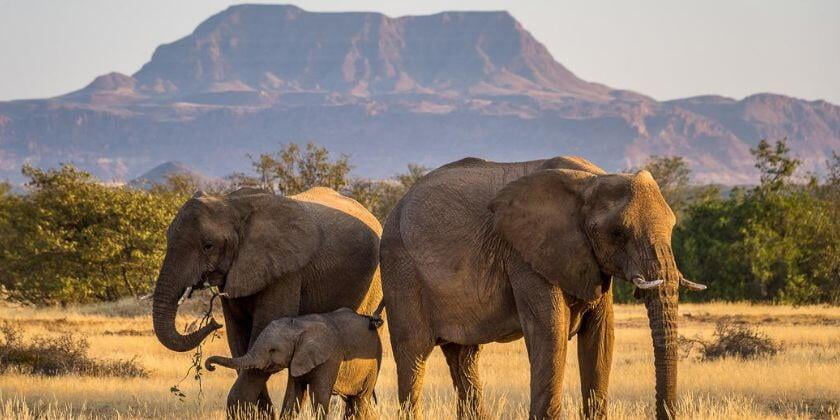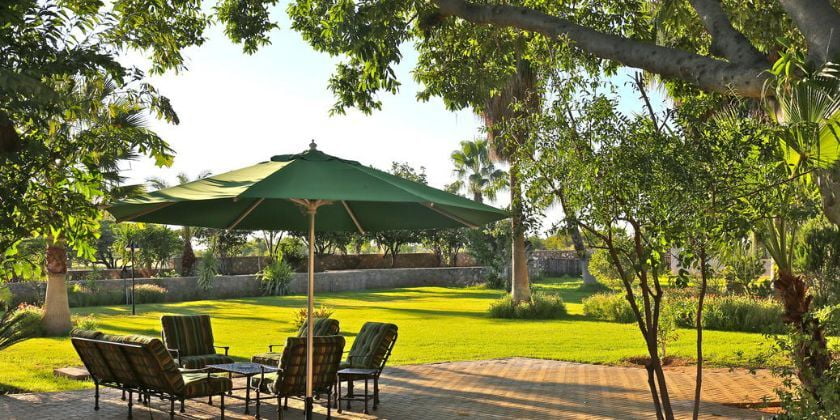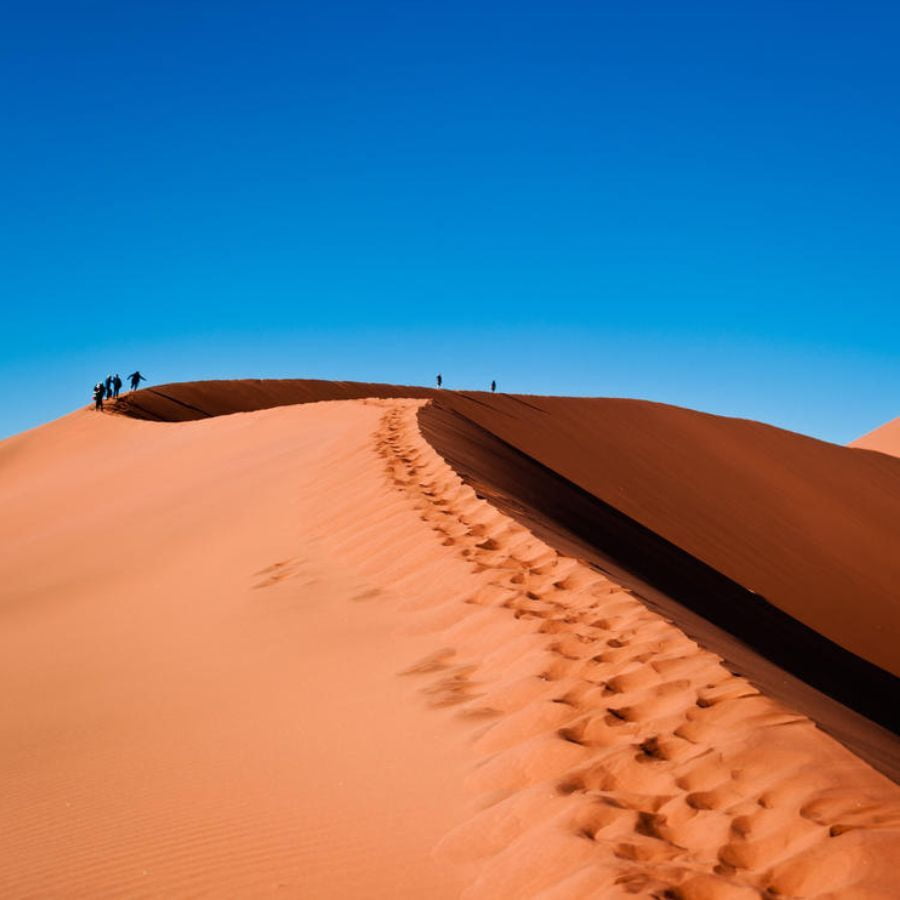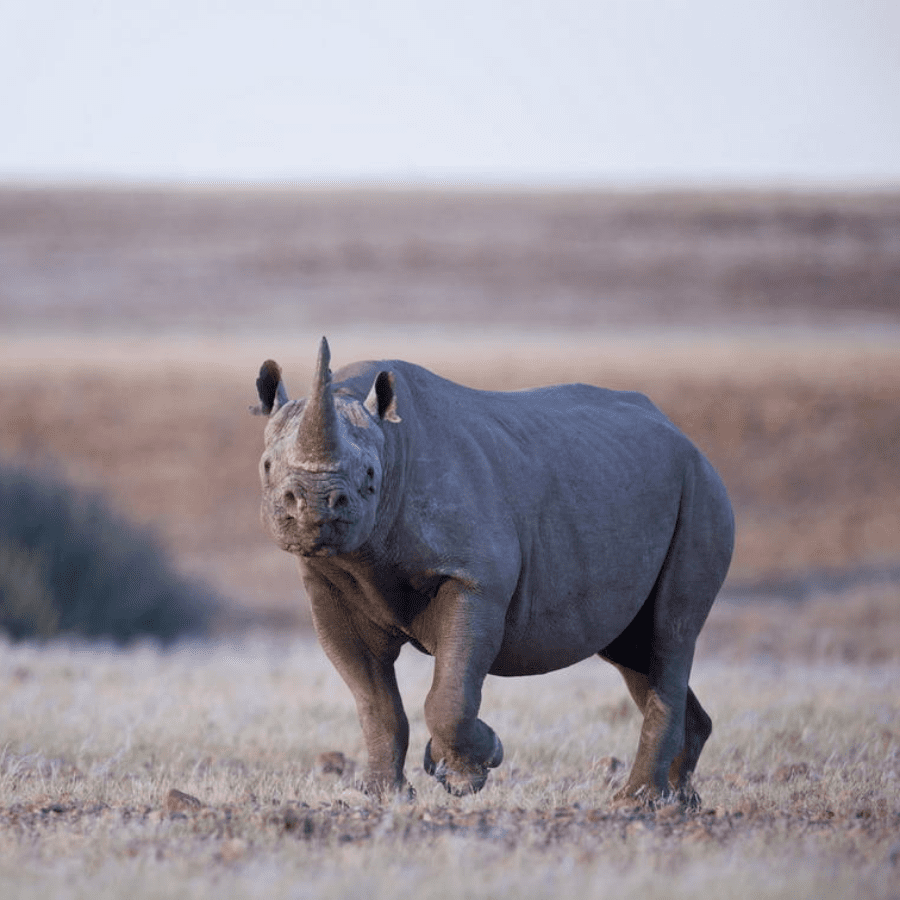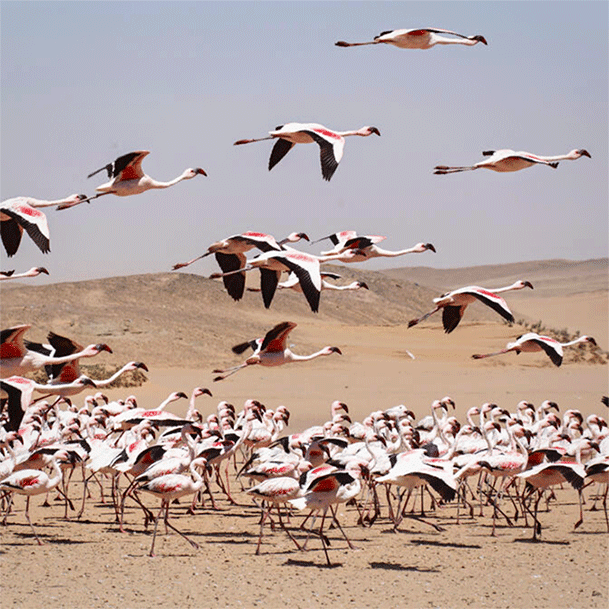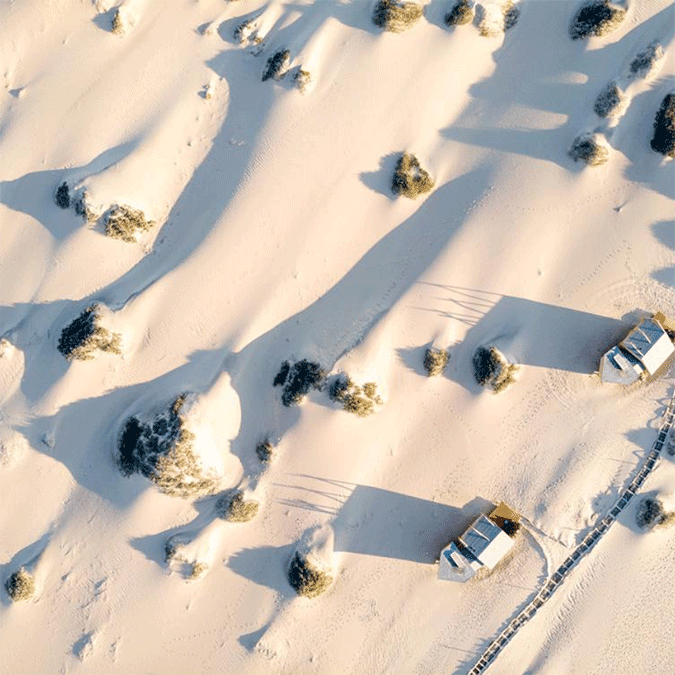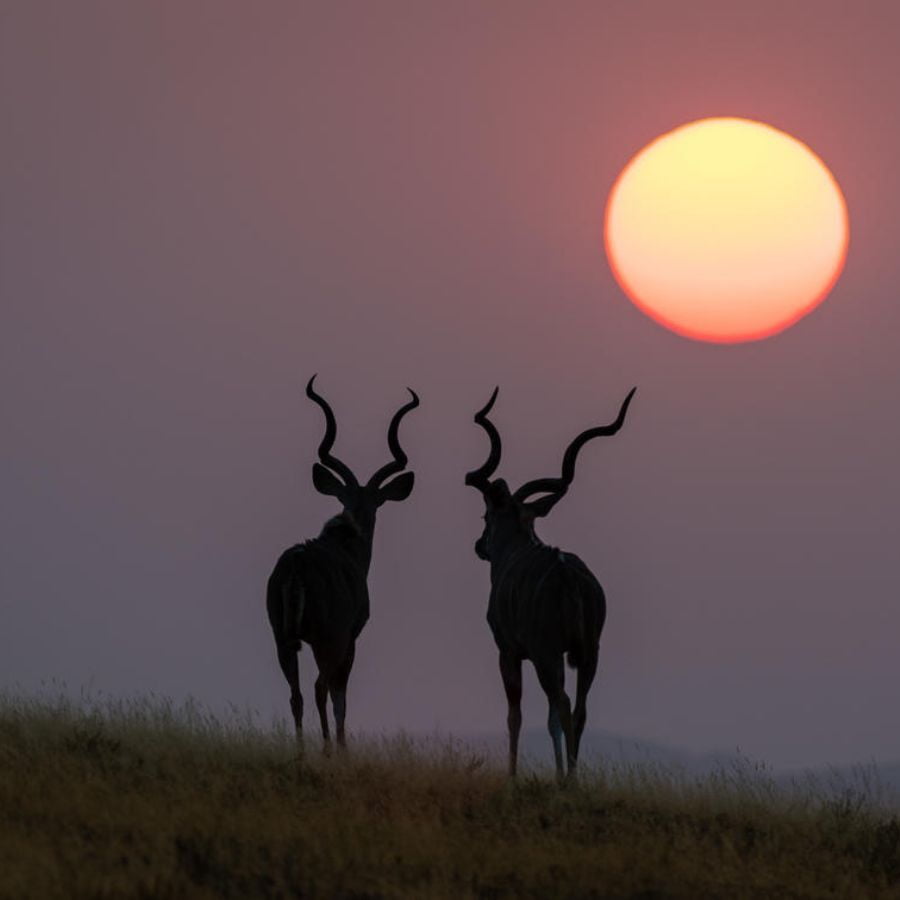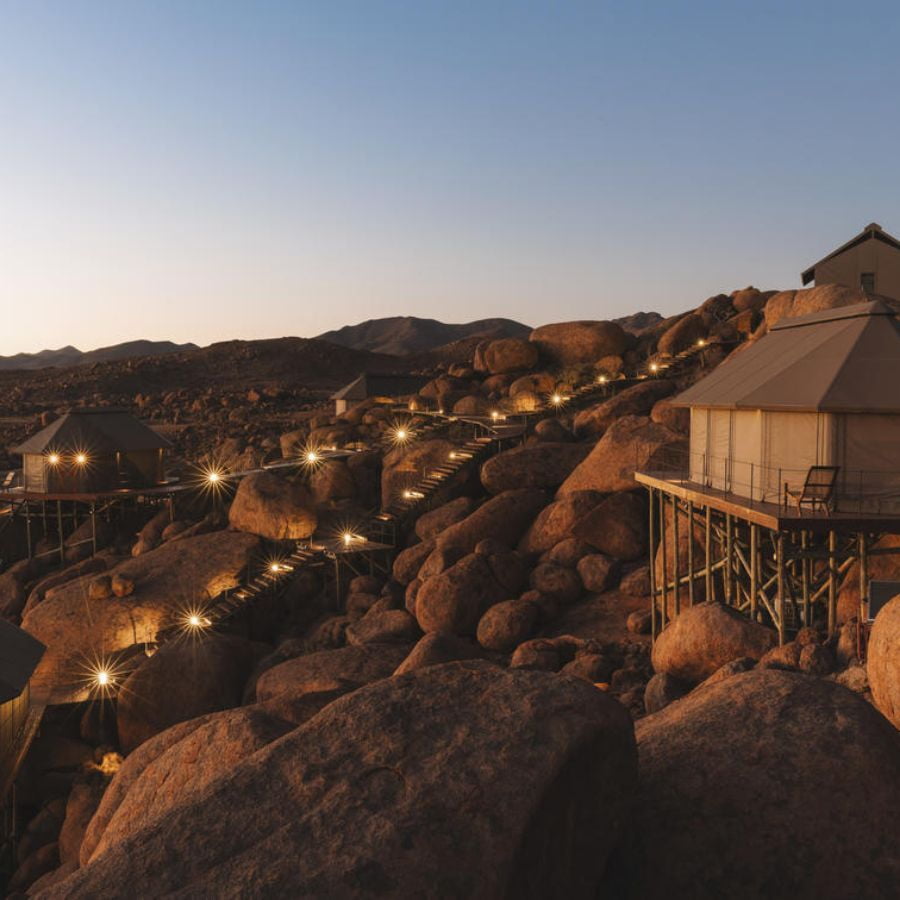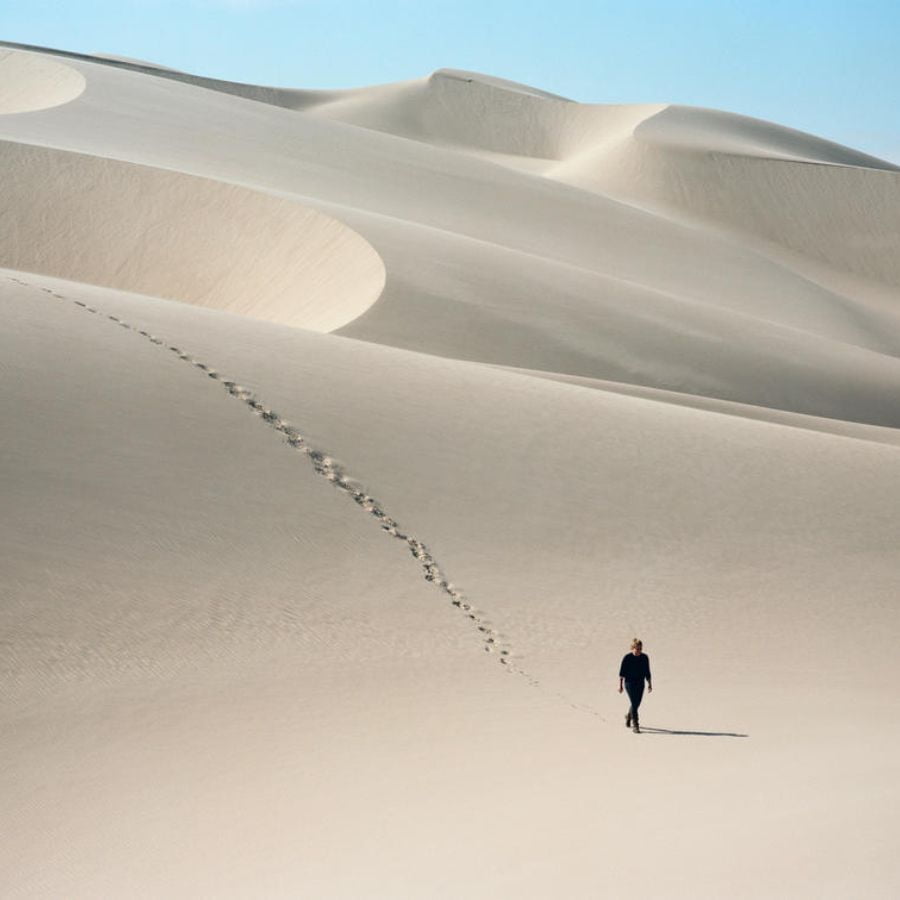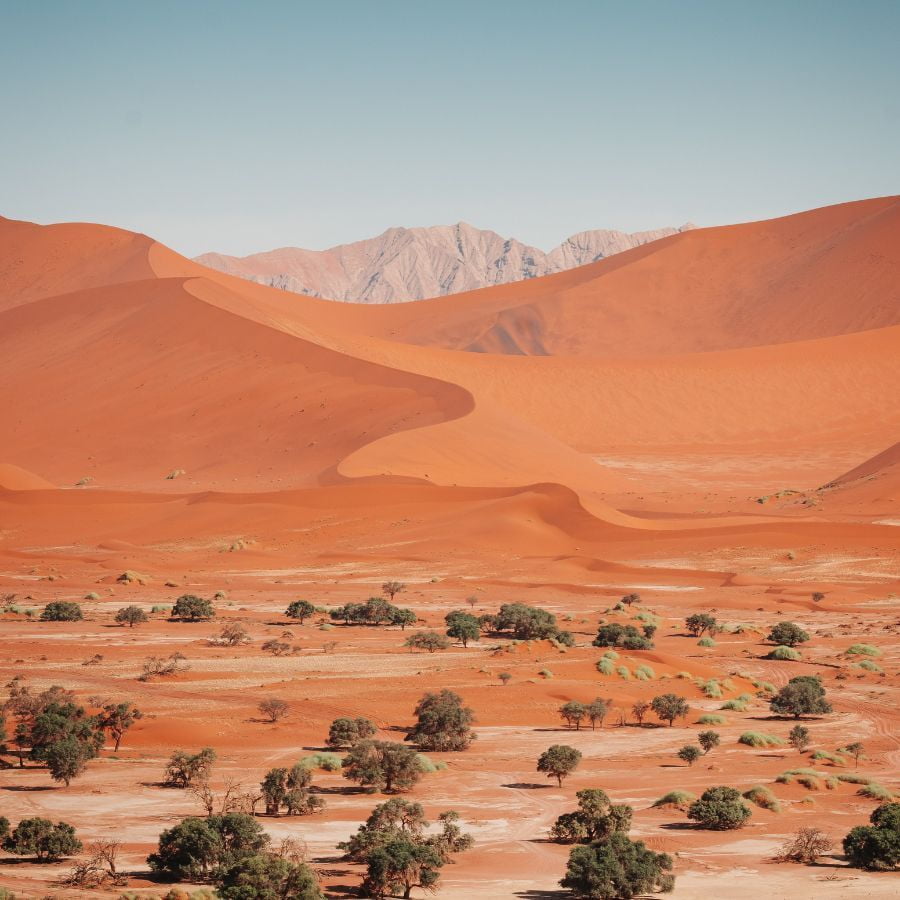Why Namibia?
Namibia is one of the largest and driest countries in Sub-Saharan Africa. It has the least rainfall due to its geographical location. The country ranks second in aridity after the Sahara desert. On its western border lies the Atlantic Ocean. Being a vast country covering twice the area of California, the population is a mere 2.63 million. The climate is typical of a semi-desert country with warmer days and cooler nights. The country is generally dry with very little rain during the first few months of the year.
Read moreRead Less
On the western side of Namibia, Namib Naukluft National Park is situated. It covers a wide area of 19,216 sq miles (49,768sq km). It is the largest National Park in Africa and ranks fourth in the world. Sossusvlei pan is one of the most frequently visited areas famous for its towering apricot-colored sand dunes. It can be reached by following the Tsauchab River valley. The other two frequently visited pan areas are Hiddenvlei and Deadvlei. Deadvlei’s striking camel thorn trees, starved from any drop of water, still stand erect where they once thrived. They survived until about 900 years ago when the sand sea finally blocked the river from occasionally flooding the pan. Sesriem Canyon is a narrow gorge, 1.5 km long and 30 meters deep, exposing layers of sedimentation deposited over millions of years.
Having a safari in Namibia, you can not miss a chance to be on Dune 7. The Namibia Ministry of Environment and Tourism has designated sand Dune 7 as the highest sand dune in the world. It has been measured at over 1256 ft(383 meters). Dune 45, Elim Dune and Big Daddy are widely known sand dunes present here. A safari trip without marking your footprints here remains incomplete. The iconic attractions of this destination are the salt and clay pans.
Swakopmund is a coastal town nestled between the desert and the sea. It has become Namibia’s premier resort town. In every craft of architectural work, you will strongly sense the German heritage. Cape Cross Seal Colony is a nationally protected colony that is home to Cape Cross Seals. Ever wondered how it would be to kayak along with the breathtaking view of beautiful flamingos? Walvis Bay Flamingos is the perfect response to your desire.
Damaraland is home to desert-adapted wildlife. Elephants need to walk further for water and fodder than any other elephant in Africa. It is a land of colors, magnificent table-topped mountains, rock formations, and vegetation. The center of attraction is Brandberg which is Namibia’s highest mountain. Brandberg is home to ancient rock paintings. It is the variety and loneliness of the area as well as the scenic splendor which will reward and astound you, giving one an authentic understanding of the word ‘wilderness’.
Twyfelfontein holds some 2,500 prehistoric engravings on boulders and slabs of red sandstone. These depict wildlife, animal tracks, and abstract scenes. It is perhaps the largest and finest collection of petroglyphs in Africa. Twyfelfonyein is one of Namibia’s key National Monuments and is well-recognized as a UNESCO World Heritage Site.
Etosha National Park covers 22,270 sq km (8,600 sq miles), of which approximately 4,760 sq km is occupied by the Etosha Pan, classified as a saline desert in its own right. You land in the Etosha National Park with the certainty of receiving wonderful game sightings. It is home to the world’s largest bird, Ostrich, and the world’s heaviest bird, Kori Bustard. Currently, the water in this National Park is sufficiently filled by rainfall water to the north of Angola, inducing floods to flow southward along the Cuvelai drainage system. The majority of the wildlife is concentrated in the waterholes where you are lucky to glimpse different wildlife species in one spot.
You can wrap your safari journey at Bay View Resort, Namibia. From a sea-facing view, while grabbing a plate of breakfast towards pampering your body with a massage, they have everything to offer you.
Quick Facts

Main International Airport
Hosea Kutako Airport

Population
2.63 Million (2022)

Country Size
824,292 square kilometers

Time Zone
GMT +2

Languages Spoken
English, Afrikaans, German,
Oshivambo, Herero, and Nama

Currency
Namibian Dollar (N$)

Peak Travel Season
May to September

Climate
Mean annual temperature is 20.45 °C

Country Highlights
Sossusvlei (Tallest dunes on earth)

Popular Dish
Meat & Pap (porridge made from ground maize)

Famous Wildlife
The Oryx

Natural Scenery
Semi-Desert
Experience Namibia
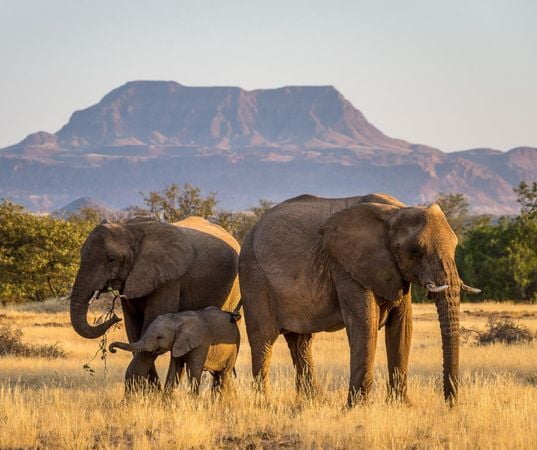
Bespoke Namibia
Try a hot-air balloon flight in Sossusvlei for arial view desert's grandeur.
Hop on a kayak at Swakopmund & spot Cape fur seals and dolphins.
Explore Damaraland, observe rare desert-adapted wildlife and vegetation.
- Take safari drive at Etosha National Park & see lions, zebras and rhinos.
- Visit the AfriCat Day Center sanctuary & learn about rehabilitation of big cats.

Ideal Length
3 or 4 Nights

Price Range
1234
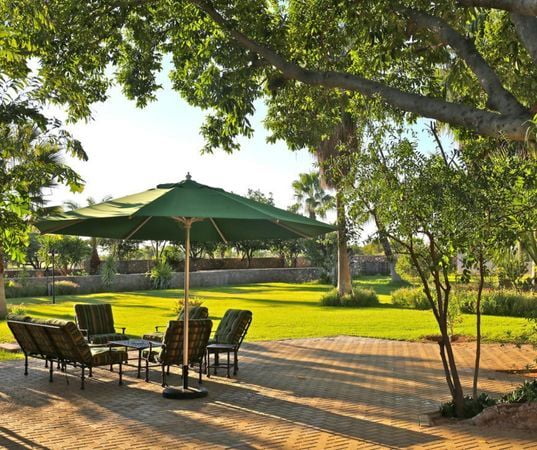
Western Namibia
- Discover Namibia's Windhoek city, go shopping and engage in cultural activities.
- Visit Damaraland and take game drives in the deserted mountains.
- Witness a rare sight of Oasis at Skeleton Coast, where a desert meets the ocean.
- Explore Etosha National Park and see variousarid-tolerant wildlife species.
- Watch how waterholes in Etosha National Park lure all wild species at one spot.

Ideal Length
3 or 4 Nights

Price Range
1234
Why Namibia?
Namibia is one of the largest and driest countries in Sub-Saharan Africa. It has the least rainfall due to its geographical location. The country ranks second in aridity after the Sahara desert. On its western border lies the Atlantic Ocean. Being a vast country covering twice the area of California, the population is a mere 2.63 million. The climate is typical of a semi-desert country with warmer days and cooler nights. The country is generally dry with very little rain during the first few months of the year.
Read moreRead Less
On the western side of Namibia, Namib Naukluft National Park is situated. It covers a wide area of 19,216 sq miles (49,768sq km). It is the largest National Park in Africa and ranks fourth in the world. Sossusvlei pan is one of the most frequently visited areas famous for its towering apricot-colored sand dunes. It can be reached by following the Tsauchab River valley. The other two frequently visited pan areas are Hiddenvlei and Deadvlei. Deadvlei’s striking camel thorn trees, starved from any drop of water, still stand erect where they once thrived. They survived until about 900 years ago when the sand sea finally blocked the river from occasionally flooding the pan. Sesriem Canyon is a narrow gorge, 1.5 km long and 30 meters deep, exposing layers of sedimentation deposited over millions of years.
Having a safari in Namibia, you can not miss a chance to be on Dune 7. The Namibia Ministry of Environment and Tourism has designated sand Dune 7 as the highest sand dune in the world. It has been measured at over 1256 ft(383 meters). Dune 45, Elim Dune and Big Daddy are widely known sand dunes present here. A safari trip without marking your footprints here remains incomplete. The iconic attractions of this destination are the salt and clay pans.
Swakopmund is a coastal town nestled between the desert and the sea. It has become Namibia’s premier resort town. In every craft of architectural work, you will strongly sense the German heritage. Cape Cross Seal Colony is a nationally protected colony that is home to Cape Cross Seals. Ever wondered how it would be to kayak along with the breathtaking view of beautiful flamingos? Walvis Bay Flamingos is the perfect response to your desire.
Damaraland is home to desert-adapted wildlife. Elephants need to walk further for water and fodder than any other elephant in Africa. It is a land of colors, magnificent table-topped mountains, rock formations, and vegetation. The center of attraction is Brandberg which is Namibia’s highest mountain. Brandberg is home to ancient rock paintings. It is the variety and loneliness of the area as well as the scenic splendor which will reward and astound you, giving one an authentic understanding of the word ‘wilderness’.
Twyfelfontein holds some 2,500 prehistoric engravings on boulders and slabs of red sandstone. These depict wildlife, animal tracks, and abstract scenes. It is perhaps the largest and finest collection of petroglyphs in Africa. Twyfelfonyein is one of Namibia’s key National Monuments and is well-recognized as a UNESCO World Heritage Site.
Etosha National Park covers 22,270 sq km (8,600 sq miles), of which approximately 4,760 sq km is occupied by the Etosha Pan, classified as a saline desert in its own right. You land in the Etosha National Park with the certainty of receiving wonderful game sightings. It is home to the world’s largest bird, Ostrich, and the world’s heaviest bird, Kori Bustard. Currently, the water in this National Park is sufficiently filled by rainfall water to the north of Angola, inducing floods to flow southward along the Cuvelai drainage system. The majority of the wildlife is concentrated in the waterholes where you are lucky to glimpse different wildlife species in one spot.
You can wrap your safari journey at Bay View Resort, Namibia. From a sea-facing view, while grabbing a plate of breakfast towards pampering your body with a massage, they have everything to offer you.
Quick Facts

Main International Airport
Hosea Kutako Airport

Population
2.63 Million (2022)

Country Size
824,292 square kilometers

Time Zone
GMT +2

Languages Spoken
English, Afrikaans, German,
Oshivambo, Herero, and Nama

Currency
Namibian Dollar (N$)

Peak Travel Season
May to September

Climate
Mean annual temperature is 20.45 °C

Country Highlights
Sossusvlei (Tallest dunes on earth)

Popular Dish
Meat & Pap (porridge made from ground maize)

Famous Wildlife
The Oryx

Natural Scenery
Semi-Desert
Experience Namibia
Why Namibia?
Namibia is one of the largest and driest countries in Sub-Saharan Africa. It has the least rainfall due to its geographical location. The country ranks second in aridity after the Sahara desert. On its western border lies the Atlantic Ocean. Being a vast country covering twice the area of California, the population is a mere 2.63 million. The climate is typical of a semi-desert country with warmer days and cooler nights. The country is generally dry with very little rain during the first few months of the year.
Read moreRead Less
On the western side of Namibia, Namib Naukluft National Park is situated. It covers a wide area of 19,216 sq miles (49,768sq km). It is the largest National Park in Africa and ranks fourth in the world. Sossusvlei pan is one of the most frequently visited areas famous for its towering apricot-colored sand dunes. It can be reached by following the Tsauchab River valley. The other two frequently visited pan areas are Hiddenvlei and Deadvlei. Deadvlei’s striking camel thorn trees, starved from any drop of water, still stand erect where they once thrived. They survived until about 900 years ago when the sand sea finally blocked the river from occasionally flooding the pan. Sesriem Canyon is a narrow gorge, 1.5 km long and 30 meters deep, exposing layers of sedimentation deposited over millions of years.
Having a safari in Namibia, you can not miss a chance to be on Dune 7. The Namibia Ministry of Environment and Tourism has designated sand Dune 7 as the highest sand dune in the world. It has been measured at over 1256 ft(383 meters). Dune 45, Elim Dune and Big Daddy are widely known sand dunes present here. A safari trip without marking your footprints here remains incomplete. The iconic attractions of this destination are the salt and clay pans.
Swakopmund is a coastal town nestled between the desert and the sea. It has become Namibia’s premier resort town. In every craft of architectural work, you will strongly sense the German heritage. Cape Cross Seal Colony is a nationally protected colony that is home to Cape Cross Seals. Ever wondered how it would be to kayak along with the breathtaking view of beautiful flamingos? Walvis Bay Flamingos is the perfect response to your desire.
Damaraland is home to desert-adapted wildlife. Elephants need to walk further for water and fodder than any other elephant in Africa. It is a land of colors, magnificent table-topped mountains, rock formations, and vegetation. The center of attraction is Brandberg which is Namibia’s highest mountain. Brandberg is home to ancient rock paintings. It is the variety and loneliness of the area as well as the scenic splendor which will reward and astound you, giving one an authentic understanding of the word ‘wilderness’.
Twyfelfontein holds some 2,500 prehistoric engravings on boulders and slabs of red sandstone. These depict wildlife, animal tracks, and abstract scenes. It is perhaps the largest and finest collection of petroglyphs in Africa. Twyfelfonyein is one of Namibia’s key National Monuments and is well-recognized as a UNESCO World Heritage Site.
Etosha National Park covers 22,270 sq km (8,600 sq miles), of which approximately 4,760 sq km is occupied by the Etosha Pan, classified as a saline desert in its own right. You land in the Etosha National Park with the certainty of receiving wonderful game sightings. It is home to the world’s largest bird, Ostrich, and the world’s heaviest bird, Kori Bustard. Currently, the water in this National Park is sufficiently filled by rainfall water to the north of Angola, inducing floods to flow southward along the Cuvelai drainage system. The majority of the wildlife is concentrated in the waterholes where you are lucky to glimpse different wildlife species in one spot.
You can wrap your safari journey at Bay View Resort, Namibia. From a sea-facing view, while grabbing a plate of breakfast towards pampering your body with a massage, they have everything to offer you.

